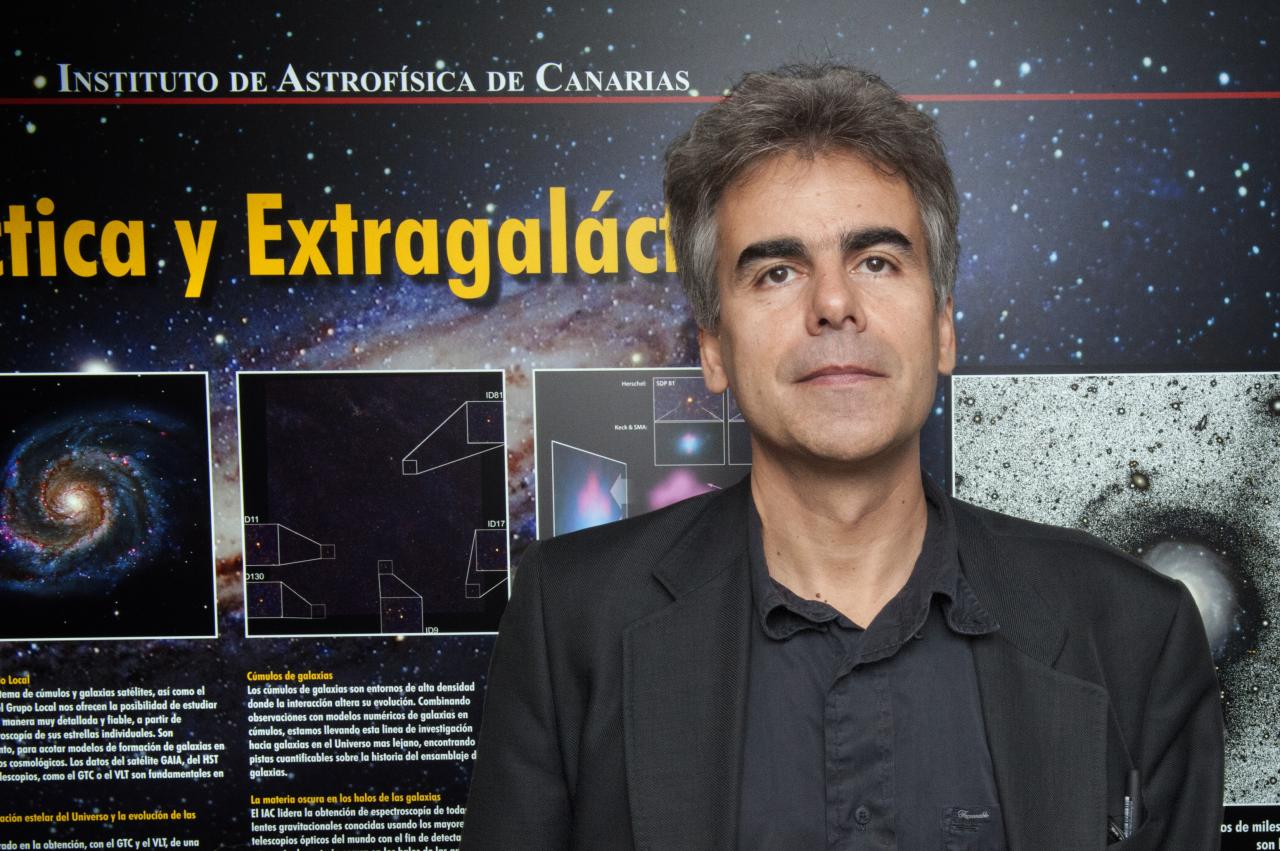By MIGUEL LÓPEZ RUBIO
“Deconvolution implies eliminating from the image everything which is blurred”
“With the EUCLID mission we will be able to tell if it is possible to set up a model of how dark Energy behaves”
“The feat of Philae, from the technical point of view, has been quite amazing”
Jean-Luc Starck processes images. It might seem simple but it is not at all trivial. Thanks to his work it will be possible to draw conclusions about a question so difficult to answer as that about dark energy. To disentangle and recompose images of the universe we need to analyze a huge quantity of data, and to use a great deal of statistics. Starck, who is Senior scientist at the Institute of Research into the Fundamental Laws of the Universe (CEA-Saclay), France, is in Tenerife to lecture about the relation between Bayesian statistics and image processing. This means bringing into play a word which is the key word in the title of his lecture to the Winter School of the IAC, “deconvolution”.
Question: The word “deconvolution” is used for the mathematical operations used in image restauration to recover data which have been degraded by some physical process. How is this applied in astrophysics?
Answer: When you look at a star it appears to be just a point. But with the instruments we use to observe this point is converted to something which expands, and this degrades the resolution of the image. We can take as an example the observation of an image of two stars very close to one another in the sky, which look as if they are fused together in the observed image. The process of eliminating the blur in this image is deconvolution.
Q: It´s a bit like eliminating the effect of “shake”, isn’t it?
A: Yes, you see that in domestic videocameras when they wobble. We have to solve a similar problem.
Q: In your field it is clear that there is a lot of work to do between the moment when you take an image and the moment when you draw conclusions from it; first you have to process it.
A: In fact the instruments which we use do not take images. In our most recent work the instrument was making a time-line, receiving information point by point from the universe. We built up a complete image from these points, which were collected over a period of six months. Six months of data and many questions to resolve, such as the effects of cosmic rays, for example. If you don’t process the data beforehand, you will never have an image.
Q: Is Bayesian statistics useful in this context?
A: In deconvolution you don’t have “facts”. There is no unique stable solution. You have to find the most reasonable solution, the solution which offers the smallest quantity of information compatible with the data. That way we can eliminate information which is not useful, such as the results of processing noise. To do this we use Bayesian statistics.
Q: You are working on one of the most interesting missions of the European Space Agency (ESA), EUCLID…
A: That´s right. I run the organizational unit in which we try to create the algorithm which will process the final product of the mission. That is, the algorithm to process the spectra, and the catalogues of galaxies. We are performing and testing simulations.
Q: An algorithm whose job is the difficult challenge of analyzing dark energy…
A: EUCLID will study a range of galaxies over a range of distances to try to understand dark energy, the force which accelerates the expansion of the universe. We may see, for example, whether it is possible to establish a model of how the energy is growing.
Q: Will you have to wait a long time to know this?
A: Once we have six years’ worth of data, and if we can produce the correct algorithm, I hope not!
Q: Since last Wednesday everyone in astrophysics is talking about the epic achievement of “Philae” which landed on a comet. Have people commented on this at the Winter School?
A: The truth is that from a technical point of view this has been a fantastic achievement.
Organizing Committee: Andrés Asensio Ramos, Íñigo Arregui, Antonio Aparicio y Rafael Rebolo.
Secretary: Lourdes González.
Contacts: Andrés Asensio Ramos (IAC): aasensio [at] iac.es (aasensio[at]iac[dot]es) y 922605238 Íñigo Arregui (IAC): iarregui [at] iac.es (iarregui[at]iac[dot]es) y 922605465
Press: Carmen del Puerto: prensa [at] iac.es (prensa[at]iac[dot]es) y 922605208
Previous press release: http://www.iac.es/divulgacion.php?op1=16&id=897
Programme of the Winter School: http://www.iac.es/winterschool/2014/pages/about-the-school/timetable.php
Further information: http://www.iac.es/winterschool/2014/
